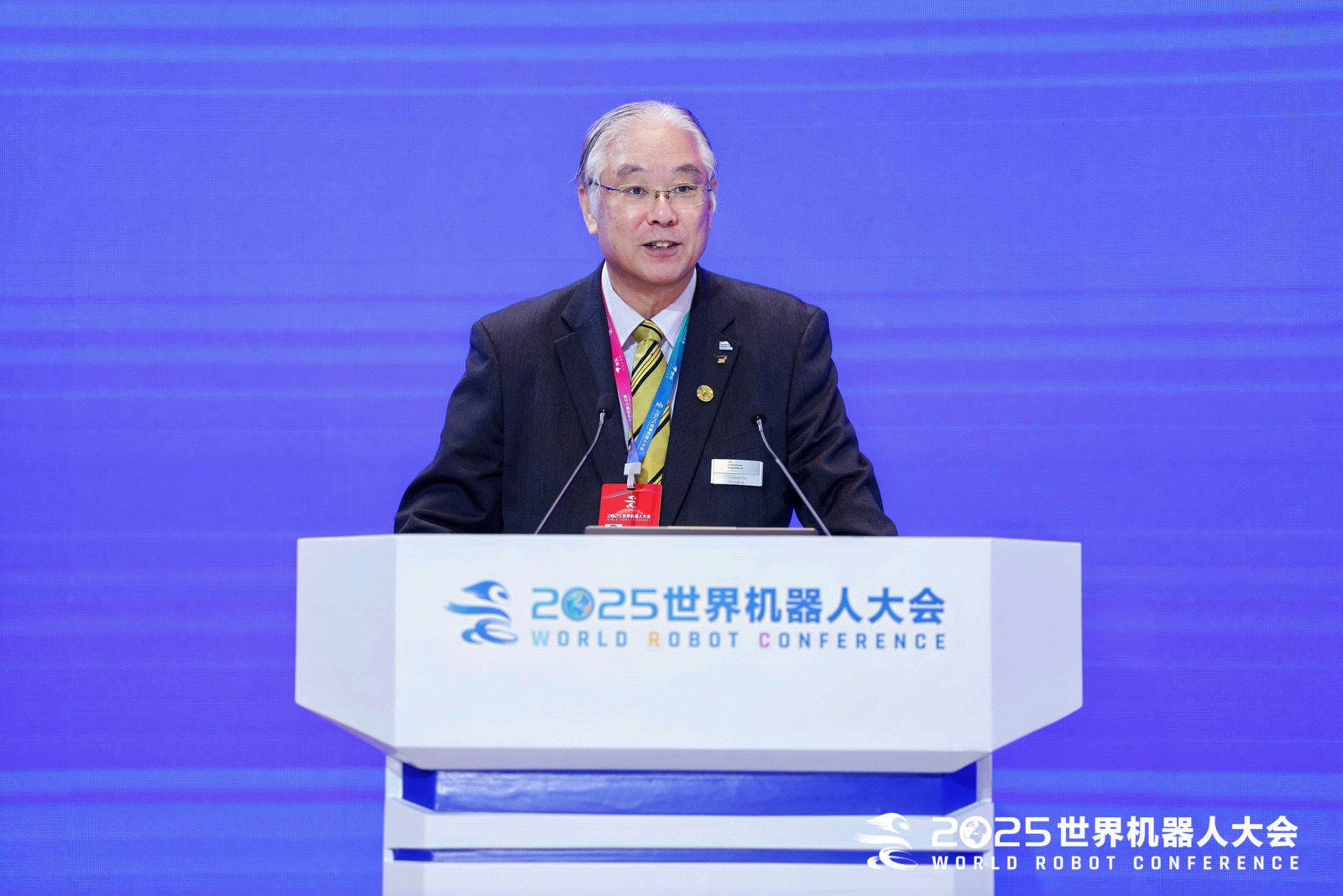By Wu Siya
BEIJING, Aug 11 (China Economic Net) – Chinese factories keep up robot roll-out, bucking a global downturn in industrial robot installations last year.
On August 9, at the World Robotics Conference that held in Beijing, Takayuki Ito, President of the International Federation of Robotics (IFR), revealed preliminary statistics that global new industrial robot installations fell by 3% last year, to approximately 523,000 units. The three major markets of Asia, Europe, and the US collectively experienced a decline: Asia saw a 2% decline, Europe contracted by 6%, and the Americas saw a 9% drop.

Takayuki Ito, President of the IFR [Photo provided to CEN]
“However, China saw a 5% counter-cyclical growth, which increased China’s global market share of industrial robots from 51% in 2023 to 54% last year, further consolidating its position as a major industrial robot country,” Takayuki Ito stated.
China is by far the world's largest industrial robot market, but installations have stabilized. In 2024, China will have installed 290,000 industrial robots, already the highest market share in history.
“For the past four years, new installations in China are trending more or less sideways,” Ito said.
In China, industrial robots have already expanded beyond the electronics and automotive industries into other sectors. Ito explained that in terms of application, the use of industrial robots in China has undergone significant changes over the past five years. The proportion of industrial robots used in general non-electronics and automotive industries has increased significantly, from 38% in 2020 to 53% in 2024, demonstrating the gradual penetration of industrial robots into a wide range of industries.

World Robotics Conference 2025 [Photo provided to CEN]
“In terms of robot density, China's robot adoption continues to accelerate. In terms of the ratio of robots to factory workers, China has surpassed Germany and Japan, ranking third in the world, behind only South Korea and Singapore,” the President introduced.
Robot density is a key indicator of the level of automation in a country’s manufacturing industry. The latest data from the International Federation of Robotics shows that as China actively promotes the application of automation technology, its robot density is expected to reach 470 robots per 10,000 employees in 2023 (up from 402 in 2022). China only broke into the top ten in 2019, but its robot density has doubled in just four years.
“As for Asia, demand for robots continues to grow. In the first quarter of 2025, Asia’s robot sales achieved single-digit year-on-year growth, with order volume saw strong double-digit growth. The Chinese market, in particular, remains the main driver of global robot demand. With China’s GDP projected to maintain positive growth in 2025 and 2026, although the growth rate of the electronics industry may slow during the same period, the demand for new production capacity remains, so China will remain the world's leading robot market.”
(Editor: fubo )


